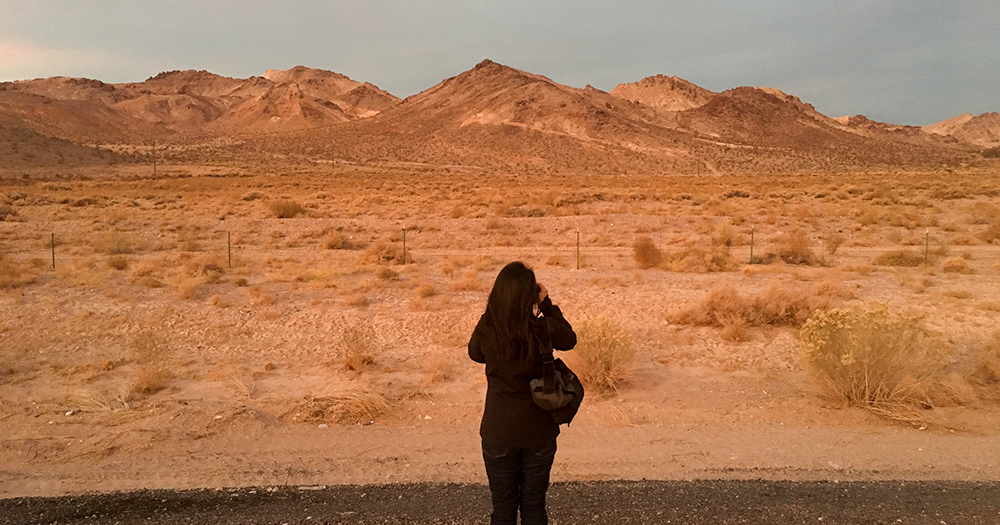This is Sim Chi Yin.
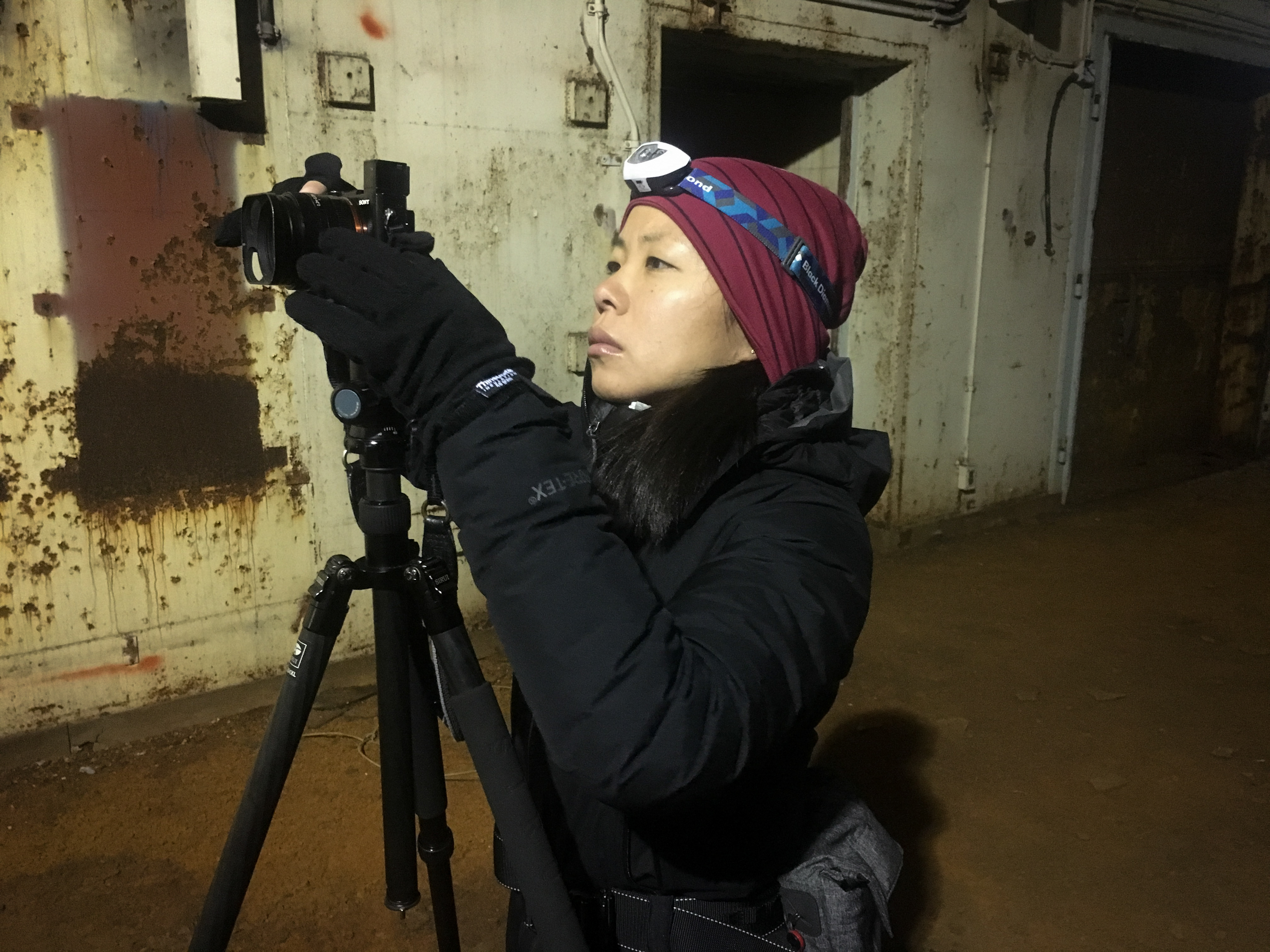 Photo by Gabriel Ellison-Scowcroft (@gabrielellisonscowcroft)
Photo by Gabriel Ellison-Scowcroft (@gabrielellisonscowcroft)
If she looks small in this picture, you're not far off the mark — she cuts a petite figure and is, even for a Singaporean female, considered to be shorter than average in terms of height.
But you would be sorely mistaken if you think her physical size reflects her distinction, passion, sense of justice, determination and fighting spirit — because if those determined one's stature, Sim stands head, shoulders and probably torso above most of us.
Putting Singapore on the world photography map
Sim is on the cusp of turning 40, and her career achievements as a journalist, photojournalist and documentary photographer (even filmmaker at some points) have been well-documented.
But you know what, let's run you through them anyway:
- After nine years shuttling between The Straits Times and a super-fulfilling stint at The New Paper, Sim clinched the Magnum Foundation Human Rights Fellowship in 2010 to kickstart her illustrious freelance photojournalism career, one she was deemed "overqualified" at Singapore Press Holdings (SPH) for.
- She was named Her World Young Woman Achiever of the Year in 2014.
- She was a member photographer with the super-exclusive and elite VII Photo Agency between 2014 and last year.
- She was unexpectedly nominated for and won the Chris Hondros award in 2017 — only one photographer is given this award each year, by the way.
- Last year, she was the first Singaporean to be a Nobel Peace Prize photographer, accepting the job without knowing what or who she was going to be taking photos of — it ended up being nuclear sites in the U.S. as well as the risky Chinese-North Korean border, where she surreptitiously photographed shots like this from inside a moving car:
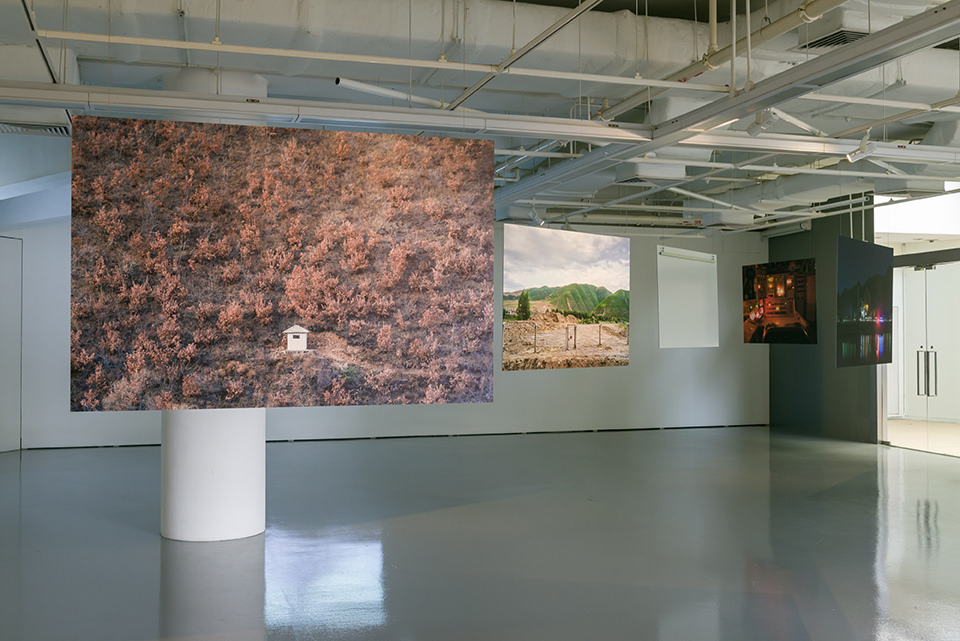 Photo via LASALLE
Photo via LASALLE
- This year, she became a nominee member with Magnum Photos, a collective of what can be said to be the world's photography elite. This is an achievement that is considered "one of the finest accolades" of a photographer's career (she's also the first Southeast Asian member, by the way).
Sim has also shot both photos and videos for big international publications such as the New York Times, The New Yorker, the Financial Times as well as the likes of National Geographic and Al Jazeera.
[related_story]
Stories of impact
We're barely scratching the surface, by the way — but what we really want to tell you about are some of her most impactful stories.
As Sim has been based in Beijing for the past 11 years, much of her work for the past decade has given viewers rare glimpses into the hidden aspects and underbelly of mainland Chinese society.
There's "The Rat Tribe of Beijing", which focuses on the lives of the million migrant workers who live beneath the surface of Beijing, in tiny, cramped rooms that are either basements or former air-raid bunkers.
There's also "Dying to Breathe", a documentary focusing on the heart-rending story of gold miner He Quangui and his struggle with silicosis in his final years. Caused by inhaling large amounts of dust, the debilitating lung disease is widely seen as a life-threatening occupational hazard that afflicts millions of Chinese miners.
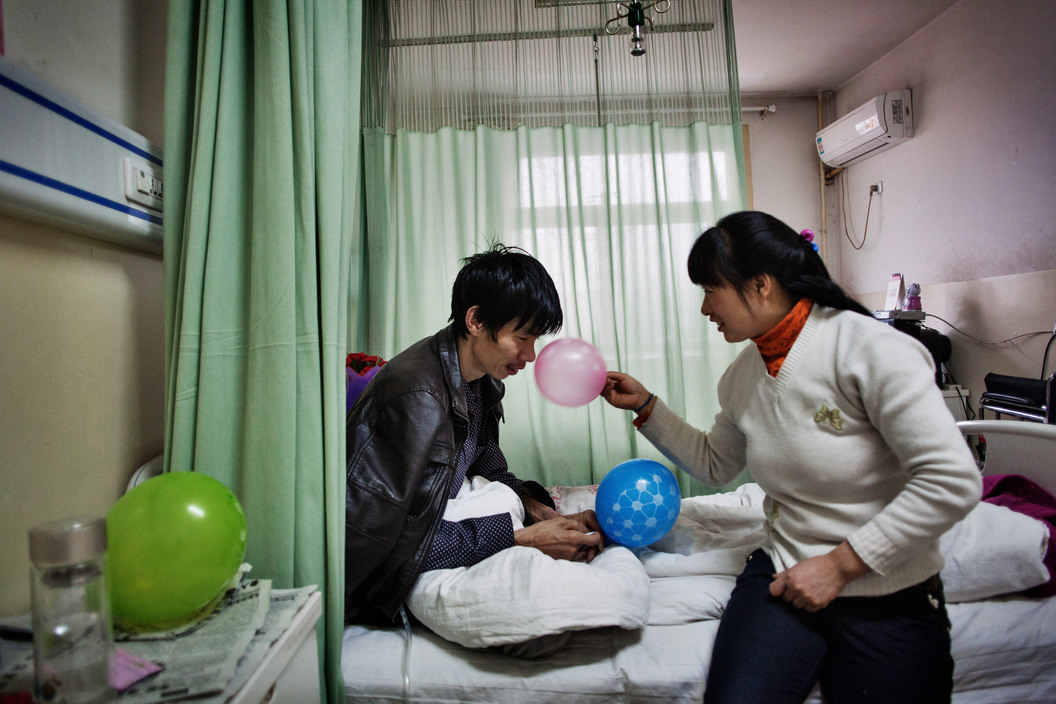 He Quangui and his wife Mi Shixiu in hospital, CHINA. 2012. From "Dying To Breathe", 2011-2015. Photo by Sim Chi Yin.
He Quangui and his wife Mi Shixiu in hospital, CHINA. 2012. From "Dying To Breathe", 2011-2015. Photo by Sim Chi Yin.
It was a documentary that took four years to make and made Sim an intimate part of the lives of He and his family.
Upon its publication in multiple media outlets, the story went viral and raised 100,000 RMB (Nearly 20,000 SGD) for the He family to help them cope with He's condition. Sim shares that one woman from the USA who read about it in the New York Times even donated a wheelchair which allowed He to venture out of his home twice before his eventual passing.
Ever since a horrendous incident in 2015 at the North Korean border involving several rabidly incensed women she had photographed that left her with a permanently-injured right thumb, she's been more or less forced to scale back on, take stock and evolve the nature of her work.
With how busy she currently is — on top of all we've mentioned, Sim is also embarking on a research PhD from October to study British Malaya, based out of London — Sim shares with us that she is in equal parts grateful for the "privileged" life she now lives, and completely grounded by the sobering realities and constant struggles it brings.
Indeed, reflecting on the otherwise-cushy life the academically-inclined National Junior College, London School of Economics-educated SPH scholar Sim could have led, her chosen path-far-less-trodden has been marked by the single constancy of struggle.
And it started with her Secondary 4 teacher.
Awakening a spirit of justice and courage
The biography on Sim's website introduces her as the granddaughter of a photographer-journalist who was killed during China's civil war.
This has led many who know her to assume it was the courageous, almost-brazen passion and spirit of her grandfather's that somehow skipped a generation and landed on Sim, and her discovery of her special lineage inspired her to follow in his footsteps.
But when we asked her what she thinks made her the passionate social justice warrior (in a completely different way from what most of us understand that term to mean) she is, Sim points to Ms Sie Siok Hui, one of her teachers at the Singapore Chinese Girls' School.Sim relates how when she was in secondary school, Sie would bring her class to volunteer at a home for children with special needs in the afternoons after school (bear in mind, by the way, that this was before the Community Involvement Programme existed, so Sie did this of her own initiative).
Sie did this, Sim shares, to remind the class of the privilege they had, that there are others in society who aren't necessarily exactly like them, and above all, the need to help, remember and see them as fellow human beings.
On the day their class photograph was taken, Sim recalls distinctly that her teacher had gotten everyone to gather above the words of the school's motto: Sincerity, Courage, Generosity and Service.
Of these, Sie asked the girls to gather above the word "Courage", urging them with words Sim would decades on recall clearly:"Girls, as you go into the world, you are going to need a lot of courage, especially moral courage."
Those experiences made a big enough impression on Sim that after her 'O' Levels, she would walk into a Salvation Army office one day and offer her help — she would go on to volunteer with them throughout her youth, also taking many end-of-year seasons to stand beside a red money pot and ring a bell for donations along the Orchard mall stretch.
"I think she’s made a huge difference in many young people’s lives that I guess there's no way to document really. She’s been an extremely impactful teacher. She’s taught generation after generation of young people who have been very impacted by her."
The OG journalist who fought for migrant workers' issues
With this in mind, it makes sense that Sim would go on to fight many fights in her life — for any cause that seized her conscience and fired up her passionate spirit for justice.
Take the cause of fair treatment for migrant workers for instance — these days, it's safe to say that migrant workers are quite visible in the consciousness of the Singaporean public.
And it's also pretty easy for advocates of migrant workers to get out the message and evidence of abuses they suffer that continue to persist:
Yet, not so many years ago, there were many cases of transient migrant workers here being exploited and dehumanised, and any attempt to make these abuses — much less their stories — known was severely discouraged, downplayed and frowned upon.
This is where Sim picked one of her first big battles — and the change her stories brought about was tangible, near-immediate and hugely impactful in bringing about great difference to many of these workers' lives.
So hard she worked pounding the migrant labour beat, particularly during a two-and-a-half year stint at The New Paper, that in the early 2000s, Sim earned the nickname "chili padi" among her colleagues and in particular her then-editor, the late Santokh Singh, for the constant fights she had with him to get her stories published.
"(He) struggled very much with managing me and my sense of vocation, and sense of purpose, and the higher-ups putting pressure on him."
But boy did she blaze the trail for all the rest of us (and we're talking about us as people who write about migrant worker abuses and issues from time to time here).
"... one day, I would sneak into an illegal dormitory in Tuas and photograph and write about it and the next day, it would be shut down. And the following week, Halimah Yacob would table a motion in Parliament to discuss migrant worker housing conditions in Singapore and then legislation follows.
You know, it’s a very straight line kind of advocacy and if you want to talk about advocacy, that is direct impact. So my most impactful period of journalism was actually at The New Paper, those two and a half years writing about migrant workers, trafficking, sex trafficking, jungle brothels.
I also wrote about workers who killed themselves, workers who were dumped upon their deaths, workers who were not paid for seven years, I wrote about the security companies that hired bounty hunters —I was very plugged into the scene."
And the more stories she wrote, the more people went to her with tip-offs about more egregious cases of abuse that were happening. And of course, the more trouble she would get into and the more she fell out of favour.
"... the late Santokh Singh used to say to me, “I know you are right but you are rocking the boat too much, you know?” So it was a constant bashing of the head against the wall and I kind of burnt out... and I was asked to go back to The Straits Times."
In one particular instance, she was so frustrated with things that she penned an open letter, published in The New Paper in 2005, titled "No rights in life, no dignity in death". Sim had written the letter to the mother of a Burmese worker, who died after falling from the building he had been painting as part of an upgrading project in Compassvale Walk. His body was subsequently found in a multi-storey carpark at Block 295 Compassvale Crescent.
It was believed that his body had been dumped there after his death. The truth of exactly how he died was never found, sadly, although his employer and a few others were eventually hauled to jail.
As Sim recalls, she filed the letter for publication on a Sunday and the editor for that day, Ken Jalleh Jr., "one of the more liberal people", let it run after changing a comma.
This resulted in a severe rebuke from Santokh Singh on Monday, who she remembers yelling, "What right do you have to sign off as ‘a Singaporean’? Why do you think you represent all of us?"
Sim tells us she eventually decided to carry on her cause outside of her work persona as "it got too difficult to continue".
She would later produce a book on Indonesian migrant workers called "Long Road Home", and organise two photography-based exhibition campaigns — "Day Off" in 2003, and "Inside Out" in 2006, both of which were aimed at elevating the profile, humanity and visibility of migrant workers among Singaporeans.
"Day Off" saw Sim gathering four other Singaporean female photographers to do a photo project on what migrant workers could do on their Sundays off. The photos were then launched in a campaign alongside the NGO Transient Workers Count Too (TWC2) at Toa Payoh bus interchange.
"Inside Out" saw a group of professional photographers gathered by Sim to teach migrant workers to take pictures of themselves and their own lives. In all, 31 workers were given donated film cameras and taught basic photography.
Some of their photos were subsequently featured in the 2006 M1 Singapore Fringe Festival.
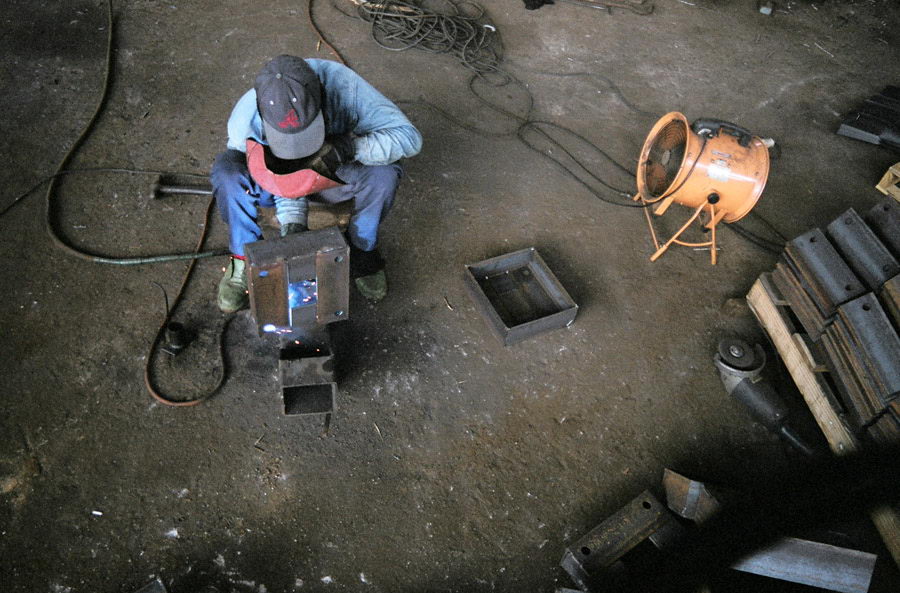 Image Credit: Kantaphong Wonnawong
Image Credit: Kantaphong Wonnawong
And that was what she did in Singapore, before finally quitting SPH and uprooting herself to Beijing to pursue her first love full-time, freelance: photography and photojournalism.
"Arriving" doesn't bring the glamorous, shiny life one might hope
Which brought to mind the next question on our mind — financial stability and sustainability, is that a problem for someone as established and lauded as her?
The answer is a sobering and resounding yes, Sim says straightaway. Professionally, she describes her work as very "rich and interesting", but declares that she, just like any other freelancer you might know, spends a lot of her time writing to apply for grants — and getting rejected.
Unscientifically, she estimates that she only successfully clinches one grant out of 100 that she may submit an application for
"This is the life of every artist and every freelancer. It’s just how it is."
So for her, the Chris Hondros Award was a very pleasant surprise as it was something she did not even apply for — rather, she was nominated for it.
"It's the best kind of prize you can win and it came with US$20,000, which is nice."
Sim adds that if her life looks like a series of successes, like for many others, that's because of social media, which she chiefly uses to thank people who have contributed to any achievement she attains.
For her, there is no point in posting about her constant grant rejections — "I mean, what are you doing crying over spilled milk online?"
Besides, Sim says while there are times she can find herself asking "where is my rent coming from?", she stresses she is also not starving by any measure since she was thrifty during the nine years she spent at SPH before striking it out on her own.
However, the 2015 attack she suffered on-the-job for French newspaper Le Monde on the North Korean border that critically injured her right thumb put her out of work for the two years that would follow. She calculates that this led her to losing up to 12 months' of work hours and income.
But it is a life that she finds "a blessing and privilege"
For all of her struggles and difficulties however, Sim says she is still blessed and privileged in the sense that she can "choose" to lead a life like this.
The topic of her upcoming PhD research is inspired by that photographer-journalist grandfather we told you about, whom she is quick to emphasise is no less of a giant in her eyes:
"... it kind of gave me comfort to know that there was someone else in this family who had had these interests before and had walked this path in a much bigger way — I’m a small potato compared to that."
In her family, in comparison, she was in the past scolded "for speaking up so much for migrant workers".
Even now, her father and uncle continue to express surprise that there are people who pay her to talk and take photos respectively, although she knows they speak "from a generation that had to put food on the table", and instead of taking what they say negatively, she appreciates the privilege she enjoys to get to live the life she does.
"So, I count my blessings and I try to make the best of this life that I have picked — this life which is unbreadcrumbed, and it’s a self-determined life and it’s not always easy, but I mean, it comes with a lot of joys and privileges."
Chi Yin's exhibition on the vicinity of nuclear sites in North Korea and the USA, titled Most People Were Silent, will be shown at LASALLE's Earl Lu Gallery, Institute of Contemporary Arts Singapore, until Oct. 10.
Top image by Gabriel Ellison-Scowcroft (@gabrielellisonscowcroft).
If you like what you read, follow us on Facebook, Instagram, Twitter and Telegram to get the latest updates.
